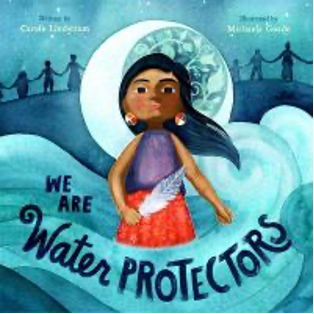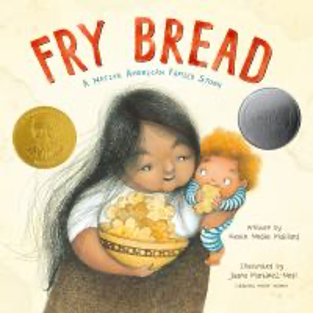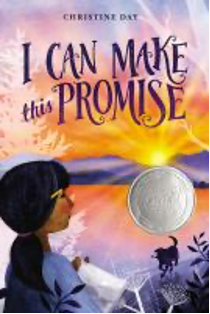By: Kristi Madron, Charlotte Mecklenburg Library
From virology and impeachment procedures to making sourdough bread and familiarizing ourselves with Zoom, Microsoft Teams and alternatives to toilet paper, 2020 has been a year of educating ourselves on things we didn’t expect. As we celebrate Native American Heritage Month this November, another thing you might have learned in North Carolina, is that a local tribe, the Lumbee tribe, though not federally recognized, was large enough to be an important and sought-after voting demographic during the Presidential 2020 election.
Relatedly, many in majority demographics don’t realize that there are more than five million Native Americans currently living inside the United States, and that three-quarters of Natives do not live on a reservation. First Nations people can be your neighbors, coworkers, health care providers and, of course, they are authors and illustrators.
The books suggested on the following list are written by current members of various Indigenous tribes. Show your children that Native Americans are not just a part of history, they are also a part of current events.
Here are a few suggestions to get you started at the Library:
Fry Bread by Kevin Noble Maillard ©2019
The author is a member of Seminole Nation and Mekusukey Band. Illustrated by Juana Martínez-Neal who is Peruvian-American. An American Indian Library Association Youth Literature 2020 Picture Book Honor winner and Robert F. Sibert Informational Book Award for most distinguished informational book for children, this well researched and beautifully illustrated picture book goes into the history of fry bread as a Native American food. When forced from their lands and given strange foods to eat that they had never encountered before, Native American people made the best of what they had, and fry bread was created! Good for ages 3-6.
Bowwow Powwow by Brenda J. Child ©2018
The author is a member of Red Lake Ojibwe. Illustrated by Jonathan Thunder, member of Red Lake Ojibwe. Winner of the 2020 American Indian Youth Literature Award for Best Picture book, it is bilingual in English and Ojibwe. Windy Girl is attending a wonderfully fun powwow with her grandfather and favorite pup, Itchy Boy. She curls up and dreams of all the amazing dances, but the dancers are all dogs! A sweet and delightful read about a special event. Good for grades Pre-K-3.
We Are Water Protectors by Carole Lindstrom ©2020
The author is of Anishinaabe/Métis descent and is tribally enrolled with the Turtle Mountain Band of Ojibwe. Illustrated by Michaela Goade, who is of Tlingit descent and is tribally enrolled with the Central Council of the Tlingit and Haida Indian Tribes of Alaska. A Kirkus Prize Finalist and one of Publishers Weekly Best Books of the Year. Native-led protests against an oil pipeline across their lands is the basis of this gorgeously and lushly illustrated picture book. “Water is the first medicine… Water is sacred” begins this tale of standing for the protection of the environment and all who depend on it to live. Good for grades K-3.
I Can Make This Promise by Christine Day ©2019
The author is a member of Upper Skagit. An American Indian Library Association Youth Literature 2020 Middle Grade Honor winner and a Charlotte Huck Award for Outstanding Fiction for Children Honor Book. Edie finds a box of letters, pictures and postcards in the attic. She is shocked when she sees a woman who looks just like her and whose name is Edith. How could this be? Her mother was adopted by a white family when she was a baby. Edie has to find out the truth about Edith and her mother, as well as learn about what friendship really is in this layered and compelling middle grade book. Good for grades 3-7.
A Girl Called Echo V1 & V2 by Katherena Vermette ©2017 & 2019
The author is a member of the Metis in Manitoba, Canada. Illustrated by Scott B. Henderson. Colors by Donovan Yaciuk. The Metis have lived in parts of the northern US and Canada, but this fantastic graphic novel series is set in modern Canada. Echo is a foster child and she rarely speaks. Instead, she dreams of the history of her people at night, waking in tears. An amazing look at how historical trauma is passed through generations. Good for grades 5-12.








